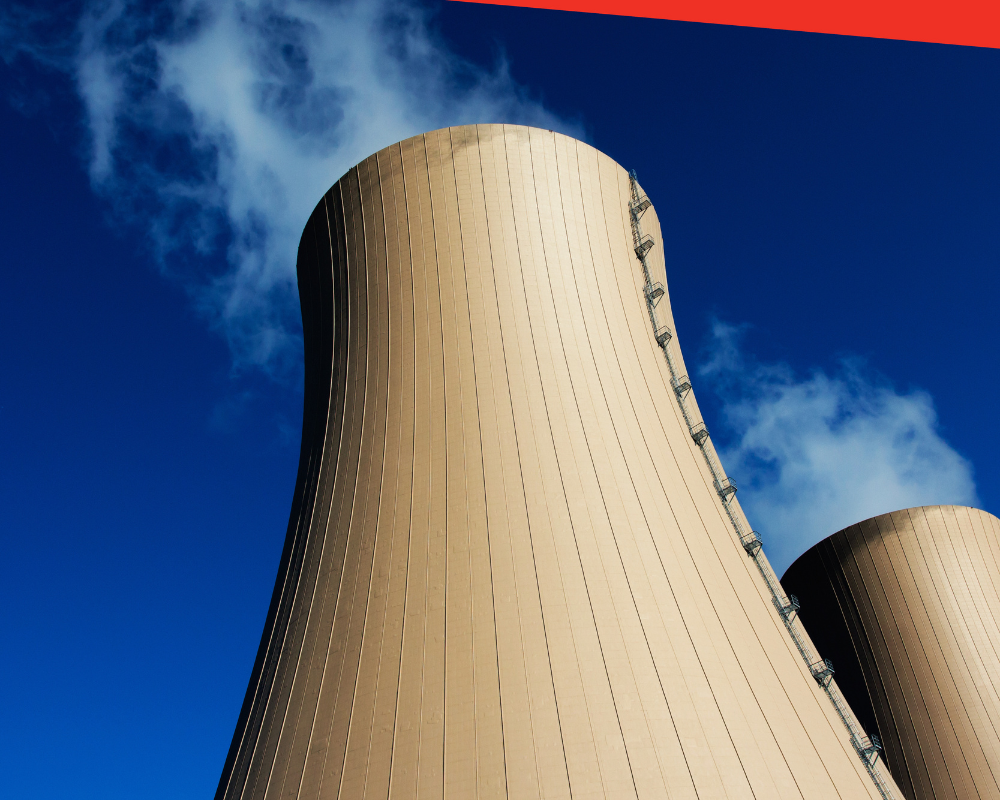With the announcement in the recent budget that nuclear energy will be classed as ‘green’, we look at the opportunities both for the sector and the people working within it.
Reclassification
In the recent Budget, the Chancellor of the Exchequer, Jeremy Hunt, announced that, subject to consultation, nuclear energy will be classed as ‘environmentally sustainable in our green taxonomy’. He added that nuclear energy is ‘vital’ to meet the UK’s net zero obligations and provide energy security, and that it would have the same access to investment as renewable energy.
To further these ambitions Mr Hunt announced the creation of Great British Nuclear, a body designed to bring down costs and provide opportunities throughout the supply chain, and which has the potential to provide up to a quarter of the UK’s electricity by 2050.
He also launched a competition, the first of its kind, for small modular reactors which, if viable, will be co-funded by the government.
Why do we need nuclear?
It’s commonly accepted that in order to have an inhabitable world in the future we need to take action on climate change now.
In 2015 The Paris Agreement was signed. This is an international, legally-binding treaty, signed by 194 parties (193 nation States plus the European Union) which aims to reduce greenhouse gas emissions in order to limit global temperatures to well below 2°C above pre-industrial levels by the middle of this century.
As part of the UK’s efforts to achieve these goals the then Prime Minister, Boris Johnson, set a target in 2021 for all of the electricity produced in the UK to come from clean sources by 2035. This was to be achieved by phasing out coal-fired power stations and developing a new energy strategy based on solar, wind, hydrogen, oil and gas, heat pumps and nuclear energy.
However, other events have necessitated a renewed push for self-reliance in energy production for the UK. Russia’s invasion of Ukraine in January 2022 has meant that wholesale gas prices have risen to such an extent that the UK spent around £60-70 billion on imports in the last twelve months – around £10 billion more than a typical year, according to a report by The Energy and Climate Intelligence Unit (ECIU). This has led to an unprecedented energy crisis in the UK and is pushing up the cost of living. National Energy Action, a fuel poverty charity, estimates that in April 2023 there will be 7.5 million UK households experiencing fuel poverty.
Clearly something needs to change, and that is where nuclear power can come into its own.
The Push for Nuclear Power
Britain built its first nuclear power station, Calder Hall, in 1956 and there are currently eight generating stations in England and Scotland, Hinkley, Sizewell, Heysham, Hartlepool, Bradwell, Wylfa, Oldbury and Moorside, some of which are expected to end generation by 2028. Today a combination of Advanced Gas-cooled Reactors (AGRs) and Pressurised Water Reactors (PWRs) work together with other environmentally sustainable power sources such as wind and solar to provide low-carbon and clean electricity which is helping to meet the UK’s efforts to reach net zero by 2050.
To further these ambitions, the Government has established Great British Nuclear to facilitate nuclear projects and support the industry in the UK. The plans include a new pipeline of nuclear projects with built-in resilience and to promote the UK as one of the best places in the world to invest in nuclear.
The aims are to increase civil nuclear up to 24GW by 2050 – three times more than is currently produced. This represents up to 25% of the projected demand for electricity in the UK. The Government hopes that the industry will provide what’s known as Small Modular Reactors (SMRs) which are receiving £210 million investment and which will be subject to competition. This includes both domestic and international vendors proposing many different designs for SMRs which have been developed in anticipation of a large global market in the future.
Interested parties include Rolls-Royce which already has proposals in the pipeline for three sites to produce components for its SMR factories and has identified several existing nuclear power plants to host its SMRs.
What Opportunities Will This Bring?
The amount of money that this Government is investing into nuclear power is truly staggering – over £2 billion during the lifetime of this Parliament, £120 million for the Future Nuclear Enabling Fund, as well as the £210 million that we’ve already mentioned for SMRs.
But investment brings opportunities and opportunities bring jobs and the career pathways for people working within the nuclear industry are wide and varied. Currently over 65,000 people work within the UK’s nuclear industries, in roles as varied as Chemists, Research Scientists, Mechanical/Nuclear/Electrical/Software Engineers, and Reactor Operators, as well as a wide variety of ancillary roles and within the supply chain. This is only likely to increase as new projects come on board in the future.
It's estimated that a single large-scale nuclear power plant could potentially support up to 10,000 jobs at its peak, but can the UK supply the skilled workforce of up to 5,000 workers every year until 2025 that it needs? Certainly workers with the necessary experience and skills will be in high demand, and the industry is making efforts to recruit and train new workers, including school leavers and graduates. But it is also looking to diversify its workforce, encouraging women and older people to pursue a career in this fast-moving, innovative and exciting sector.
Get in touch
If you are looking for a new role in one of the many nuclear industry sectors, whether you’re a recent graduate, an experienced professional, or your organisation is hiring, you can contact us on +44 (0) 151 666 8999, email us at info@scantec.co.uk or fill out the contact for here.






